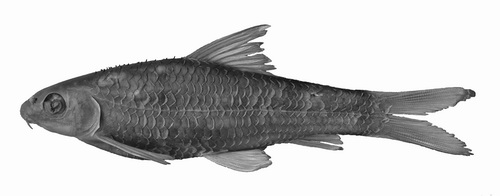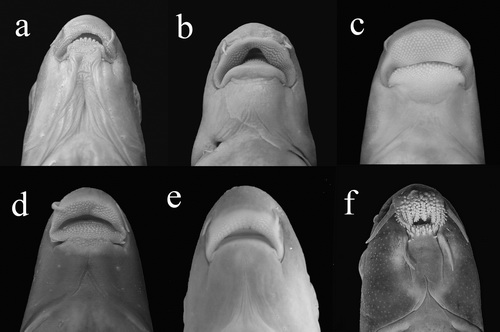Labeoninae is a subfamily in the family Cyprinidae of order Cypriniformes and inhabit fast flowing freshwater. This species is characterized with their highly modified and variable lips. Labeoninae fish is high in biodiversity and the largest species richness is in the karst region around southern China. In China, there are 26 genera, of which 12 are endemic. Therefore, Labeoninae has become a hotspot in the studies of the systematic evolution of Cyprinid fish.
Recently, during the process of checking Labeoninae specimens, Prof. YANG Junxing (Kunming Institute of Zoology, CAS) and his colleagues have found some specimens which were never documented. Through morphological comparisons, these specimens have been recognized as a new endemic monotypic genus from Guangxi, China, and have been named as Stenorynchoacrum xijiangensis. This new species distributes only in the tributaries of Xijiang River. Guilin, Guangxi. In dry seasons, they habitat underground caves, whereas, migrate to small tributaries connect with these caves in flood seasons. The fact that Stenorynchoacrum constitutes an independent branch in the molecular phylogenetic tree of Labeoninae has strongly confirmed the effectiveness of this new genus. Moreover, Stenorynchoacrum fish is similar with Pseudogyrinocheilus and Semilabeo fish in morphology and close to species of Rectoris in term of molecular evolution.
This new finding emphasizes the prominent place the karst region in southern China of in ichthyology and also indicates that the biodiversity in this region needs to be further explored.
Details can be found in Zootaxa (http://www.mapress.com/zootaxa/2014/f/z03793p386f.pdf).

Figure 1 Stenorynchoacrum xijiangensis,holotype. (From Zootaxa)

Figure 2 The morphology of lips and associate structures. a: Stenorynchoacrum xijiangensis; b: Pseudogyrinocheilus procheilus; c: Semilabeo notabilis; d: Parasinilabeo assimilis; e: Rectoris posehensis; f: Ptychidio jordani. (From Zootaxa)





